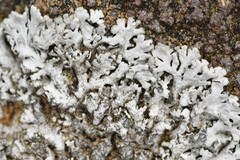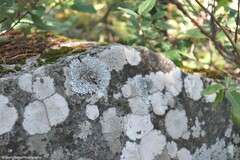©Braden J. Judson, some rights reserved (CC0)
©Braden J. Judson, some rights reserved (CC0)
©Elio Giacone, some rights reserved (CC-BY-NC)
©Braden J. Judson, some rights reserved (CC0)
©Braden J. Judson, some rights reserved (CC0)
©Gerry Bates, some rights reserved (CC-BY-NC)
©Gerry Bates, some rights reserved (CC-BY-NC)
©Gerry Bates, some rights reserved (CC-BY-NC)
©Alexis, some rights reserved (CC-BY)
©Elio Giacone, some rights reserved (CC-BY-NC)
©Coby Meester, some rights reserved (CC-BY-NC)
©Liam Pentangelo, some rights reserved (CC-BY-NC)
©Liam Pentangelo, some rights reserved (CC-BY-NC)
©faluke, some rights reserved (CC-BY-NC)
©DW, some rights reserved (CC-BY-NC)
©Eva Ullström, some rights reserved (CC-BY-NC)
©Eva Ullström, some rights reserved (CC-BY-NC)
©Eva Ullström, some rights reserved (CC-BY-NC)
©Eva Ullström, some rights reserved (CC-BY-NC)
©Randal, some rights reserved (CC0)
©Randal, some rights reserved (CC0)
©frvh, some rights reserved (CC-BY-NC)
©frvh, some rights reserved (CC-BY-NC)
©frvh, some rights reserved (CC-BY-NC)
©Jay Brasher, some rights reserved (CC-BY)
©Jay Brasher, some rights reserved (CC-BY)
©Marco Vicariotto, some rights reserved (CC-BY-NC-ND)
©Elio Giacone, some rights reserved (CC-BY-NC)
©welshrach, some rights reserved (CC-BY-NC)
©welshrach, some rights reserved (CC-BY-NC)
©C.S.Yampae, some rights reserved (CC-BY-NC)
©C.S.Yampae, some rights reserved (CC-BY-NC)
©Braden J. Judson, some rights reserved (CC0)
©Braden J. Judson, some rights reserved (CC0)
©lainetaylor, some rights reserved (CC-BY-NC)
©Séraphin Poudrier, some rights reserved (CC-BY-NC)
©Braden J. Judson, some rights reserved (CC0)
©Braden J. Judson, some rights reserved (CC0)
©Peter Stimmler, some rights reserved (CC-BY-NC)
©Philip O.M. Steinhoff, some rights reserved (CC-BY-NC)
©frvh, some rights reserved (CC-BY-NC)
©Randal, some rights reserved (CC0)
©Braden J. Judson, some rights reserved (CC0)
©Randal, some rights reserved (CC0)
©Randal, some rights reserved (CC0)
©petr_kosachev, some rights reserved (CC-BY-NC)
©Elio Giacone, some rights reserved (CC-BY-NC)
©DW, some rights reserved (CC-BY-NC)
©rderk, some rights reserved (CC-BY-NC)
©Viktor Björkert, some rights reserved (CC-BY-NC)
©Viktor Björkert, some rights reserved (CC-BY-NC)
©frvh, some rights reserved (CC-BY-NC)
©Tatyana Zarubo, some rights reserved (CC-BY-NC)
©Tatyana Zarubo, some rights reserved (CC-BY-NC)
©Andrew Simon, some rights reserved (CC-BY-NC)
©Braden J. Judson, some rights reserved (CC0)
©alcesevropsky, some rights reserved (CC-BY-SA)
©Ángel Fernández Cancio, some rights reserved (CC-BY-NC)
©Иван Матершев, some rights reserved (CC-BY-NC)
©Иван Матершев, some rights reserved (CC-BY-NC)
©Warren Layberry, some rights reserved (CC-BY-NC)
©Elio Giacone, some rights reserved (CC-BY-NC)
©Gertraud Seiser, some rights reserved (CC-BY-NC)
©Gertraud Seiser, some rights reserved (CC-BY-NC)
©Gertraud Seiser, some rights reserved (CC-BY-NC)
©Gertraud Seiser, some rights reserved (CC-BY-NC)
©Gertraud Seiser, some rights reserved (CC-BY-NC)
©Maggie, some rights reserved (CC-BY-NC)
©Maggie, some rights reserved (CC-BY-NC)
©Maggie, some rights reserved (CC-BY-NC)
©Maggie, some rights reserved (CC-BY-NC)
©adriennea, some rights reserved (CC-BY-NC)
©adriennea, some rights reserved (CC-BY-NC)
©Coby Meester, some rights reserved (CC-BY-NC)
©bugman-nz, some rights reserved (CC-BY-NC-SA)
©Elio Giacone, some rights reserved (CC-BY-NC)
©Karen Weaving, some rights reserved (CC-BY-NC)
©Karen Weaving, some rights reserved (CC-BY-NC)
©Angus Mossman, some rights reserved (CC-BY-NC)
©Angus Mossman, some rights reserved (CC-BY-NC)
©Angus Mossman, some rights reserved (CC-BY-NC)
©Angus Mossman, some rights reserved (CC-BY-NC)
©Angus Mossman, some rights reserved (CC-BY-NC)
©frvh, some rights reserved (CC-BY-NC)
©Krylenko VV, some rights reserved (CC-BY-NC)
©Krylenko VV, some rights reserved (CC-BY-NC)
©Krylenko VV, some rights reserved (CC-BY-NC)
©Krylenko VV, some rights reserved (CC-BY-NC)
©Krylenko VV, some rights reserved (CC-BY-NC)
©Krylenko VV, some rights reserved (CC-BY-NC)
©Krylenko VV, some rights reserved (CC-BY-NC)
©Coby Meester, some rights reserved (CC-BY-NC)
©Coby Meester, some rights reserved (CC-BY-NC)
©Coby Meester, some rights reserved (CC-BY-NC)
©haidastorm, some rights reserved (CC-BY-NC)
©C.S.Yampae, some rights reserved (CC-BY-NC)
©eeya, some rights reserved (CC-BY-NC)
©eeya, some rights reserved (CC-BY-NC)
©eeya, some rights reserved (CC-BY-NC)
©shroomsday, some rights reserved (CC-BY-NC)
©shroomsday, some rights reserved (CC-BY-NC)
©Stephen James McWilliam, some rights reserved (CC0)
©frvh, some rights reserved (CC-BY-NC)
©dgcurrywheel, some rights reserved (CC-BY-NC)
©Guerric Haché, some rights reserved (CC-BY-NC)
©Guerric Haché, some rights reserved (CC-BY-NC)
©Guerric Haché, some rights reserved (CC-BY-NC)
©Guerric Haché, some rights reserved (CC-BY-NC)
©Guerric Haché, some rights reserved (CC-BY-NC)
©Guerric Haché, some rights reserved (CC-BY-NC)
©Guerric Haché, some rights reserved (CC-BY-NC)
©Colin Meurk, some rights reserved (CC-BY-NC-SA)
©Valentin Hamon, some rights reserved (CC-BY-NC)
©mirandanorth, some rights reserved (CC-BY-NC)
©aimeele, some rights reserved (CC-BY-NC)
©Guerric Haché, some rights reserved (CC-BY-NC)
©Guerric Haché, some rights reserved (CC-BY-NC)
©Guerric Haché, some rights reserved (CC-BY-NC)
©Guerric Haché, some rights reserved (CC-BY-NC)
©Guerric Haché, some rights reserved (CC-BY-NC)
©Randal, some rights reserved (CC0)
©Randal, some rights reserved (CC0)
©Randal, some rights reserved (CC0)
©Darcy Kehler, some rights reserved (CC-BY-NC)
©John D Reynolds, some rights reserved (CC-BY-NC)
©John D Reynolds, some rights reserved (CC-BY-NC)
©wilpersm, some rights reserved (CC-BY-NC)
©wilpersm, some rights reserved (CC-BY-NC)
©wilpersm, some rights reserved (CC-BY-NC)
©wilpersm, some rights reserved (CC-BY-NC)
©faluke, some rights reserved (CC-BY-NC)
©Judy Gallagher, some rights reserved (CC-BY-NC)
©Zach Hawn, some rights reserved (CC-BY-NC-SA)
©faluke, some rights reserved (CC-BY-NC)
©faluke, some rights reserved (CC-BY-NC)
©Sageost, some rights reserved (CC-BY-NC)
©hwikle, some rights reserved (CC-BY-NC)
©hwikle, some rights reserved (CC-BY-NC)
©mjr1905, some rights reserved (CC-BY-NC)
©Cristian Meling, some rights reserved (CC-BY-NC-SA)
©zorille, some rights reserved (CC-BY-NC)
©Sam Hough, some rights reserved (CC-BY-NC)
©Petzenbär, some rights reserved (CC-BY-NC)
©Petzenbär, some rights reserved (CC-BY-NC)
©Petzenbär, some rights reserved (CC-BY-NC)
©dgcurrywheel, some rights reserved (CC-BY-NC)
©Brian Starzomski, some rights reserved (CC-BY-NC)
©Brian Starzomski, some rights reserved (CC-BY-NC)
©Brian Starzomski, some rights reserved (CC-BY-NC)
©Brian Starzomski, some rights reserved (CC-BY-NC)
©Brian Starzomski, some rights reserved (CC-BY-NC)
©Brian Starzomski, some rights reserved (CC-BY-NC)
©Brian Starzomski, some rights reserved (CC-BY-NC)
©Hans Gerstenkorn, some rights reserved (CC-BY-NC)
©Hans Gerstenkorn, some rights reserved (CC-BY-NC)
©Hans Gerstenkorn, some rights reserved (CC-BY-NC)
©Michel Langeveld, some rights reserved (CC-BY-SA)
©Michel Langeveld, some rights reserved (CC-BY-SA)
©Julia Carr, some rights reserved (CC-BY-NC)
©Julia Carr, some rights reserved (CC-BY-NC)































































































































































